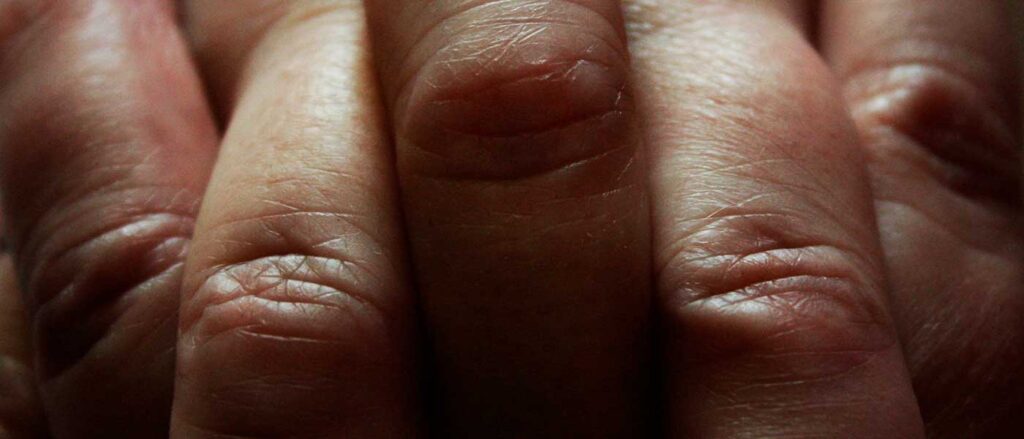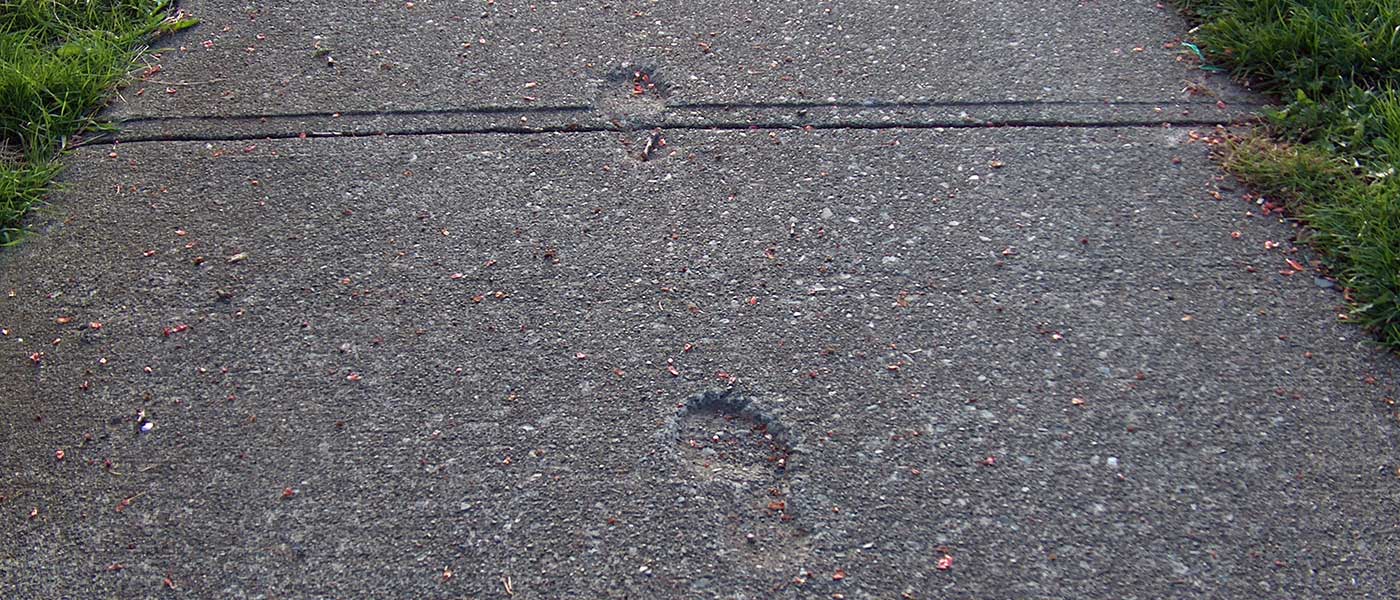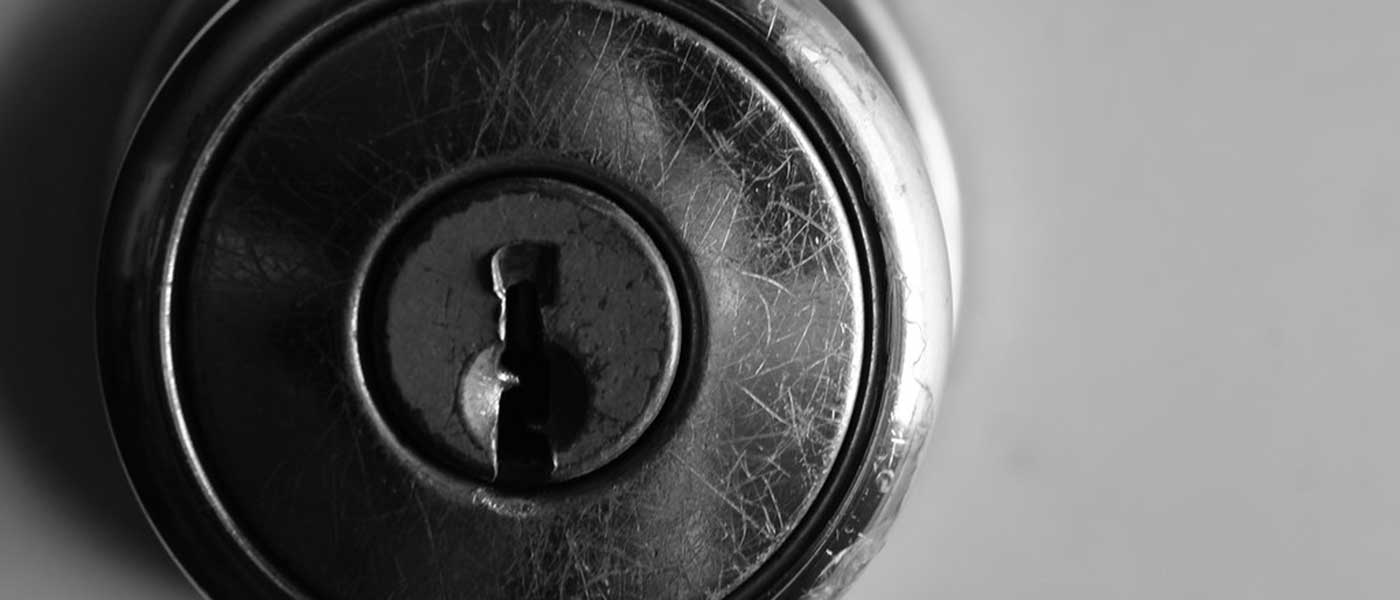The first time I met my now in-laws, devout Catholics, it was Easter weekend. Dave and I had been dating for five months. He drove us from his Manhattan apartment to their stately home, tucked behind a reservoir in southwestern Connecticut. I had packed what I had perceived to be the most Easter-appropriate skirt I owned, green velvet with a spray of pink flowers. When we arrived that Saturday afternoon, I had laid the skirt atop the white wicker crib that occupied the corner of the guest room. That night, I slid into the bed nestled against the slanted, eave wall covered in delicate blue wallpaper. Dave was two doors down in the larger guest room, a separation that I had anticipated, but still felt as cold and formal as the smooth, white tiles of the en suite bathroom.
I wore the skirt Easter morning as I sat and read the Sunday New York Times in a kitchen almost as large as the apartment I’d grown up in. Dave and his parents had gone to mass without me. Dave’s mother had thought I might be “more comfortable that way.” I know this now. At the time, I’m pretty sure the words Dave used were, “you’re not invited.” He said this with the resigned look I have come to know well, after I’d already showered and dressed.
The church of St. Francis Xavier occupies a swath of land that runs between 15th and 16th Streets in Manhattan, just off 6th Avenue. Completed in 1882, it was designed by Irish immigrant architect Patrick C. Keeley. From the outside, its blue-gray granite belies what awaits. When you step inside, the ceiling sweeps up and the stained glass that hugs the periphery of the apse announces itself from across the building. The wide nave is somber and beautiful, lined with scenes of the Apostles and other figures whose names and stories I once knew. Many of our wedding guests later shared their amazement at the space, several who’d walked by the building hundreds of times, never imagining how glorious it might be inside.
Though it’s been 13 years since that afternoon, I can still feel the faded carpet under my flats as I reached the front of the church and the row of chairs for me, Dave, his brother Dan (best man), and my best friend Jenn (maid of honor). As we sat facing our guests, I focused on my mother seated in the front pew in her bespoke grey dress, next to my aunt Mari in her kimono and my father in his tux. Dave had a loose strand of hair that swooped over and across his forehead that March afternoon. I didn’t notice it at the time, but when I look back at our wedding photos, it stares back at me, untamed.
Our officiant was Father Jim Coughlin, who was the drama teacher at Xavier High School, which is attached to the church. We had met him only once before the ceremony, and I appreciated his calm presence and surprising sense of humor. He reminded me of several of my mother’s friends around whom I’d grown up.
Xavier maintains its seemingly oxymoronic reputation as a gay-friendly Catholic parish. At the time I took this as a good sign, that Xavier was a welcoming community. It was there that I reconnected with my 10th grade French teacher Mr. Ling, who was one of the school’s few openly gay teachers when I was a student there. He was a long time parishioner, I learned, after we hugged on my first Sunday there, he with his Dylan McKay Baja hoodie and long, flowing hair that evoked Jesus himself. Xavier’s website lists monthly meetings for “Catholic gay men” and “Catholic lesbians.” Today, I wonder, what does it mean if you don’t fit into that binary?
Before Dave and I could wed at Xavier — the same church where I’d converted to Catholicism to appease his family — we had to attend a Catholic marriage preparation course. Pre-Cana, as it is called, is advertised as a time for couples to talk about important topics — faith, finances, children — before committing to each other “all the days of our lives.” (At least, that’s the version I requested Father Jim use instead of “’til death do us part.”)
The course could be taken over several months, with monthly meetings, but since we were living in Brazil at the time, and would be flying home to the States for Pre-Cana, I looked for a more concentrated option. I had heard about a weekend intensive that followed a retreat model, but learned that men and women were to stay in separate bunk houses, much like Dave and I had to stay in separate rooms at his parents’ home. No thank you. Instead, I cobbled together our own intensive: back-to-back days of a two-part weekend program, the days usually spaced some weeks apart. We would spend Saturday in the Bronx for part one with one cohort, and Sunday on Staten Island for part two with another.
Day one was led by a man who introduced himself as a first grade teacher and father of six, there to guide us, 20 or so couples, in our marriage preparation. We were clustered in stiff wooden chairs with fold-down seats in a high school auditorium; all facing the stage so there was no way to read each other’s expressions. The room was quiet, as I imagined it would be, all the good Catholics seated like they’d been trained to for mass. We were given workbooks to fill out over the course of the day, some parts individually, others together. Dave and I were encouraged to think about the ways that we would be sharing a life together, centered around our Catholic calling to grow our family. The decision to send our kids to public or private school, our most contentious joint decision to date, never came up. Nor were we given the tools to deal with our knock-down, drag-out battle over lighting fixtures during the renovation of our house, the only time I’ve ever thrown a glass to the ground to break it for emphasis.
We talked about finances and how many kids we wanted. I pretended to scribble in my workbook. We did not start to negotiate how the daily minutia of our lives would be shared, or think about ways we could make each other feel seen. Pre-Cana was itself another drum beat in the parade of compromises I would make until I no longer recognized the partner, the woman, I had become. We took so much for granted. Just like so much of Dave’s Catholicism growing up. While I knew that he no longer believed in some of the things he’d been force-fed as a child — that birth control, premarital sex, and abortion are wrong — I was less clear on what he wanted to hold onto. I now know that the part of church he misses most is the community that he felt it fostered. But we’ve found other ways to forge kinship.
Several times during the course of that weekend, I wanted to walk out. Looking back now, I wish I had. At the time, I was too beholden to getting the certificate that we needed in order to wed. Just get through this weekend, I thought to myself. At one point, our instructor spoke of the evils of pre-marital sex, expounding on the beauty of the act when it is saved for the marital bed. He acknowledged that there were likely couples in the room who had already had sex. For those of us in that situation, he encouraged us to stop until the wedding. The metaphor that he used to describe those who would continue to cave to bodily desires is forever etched into my brain. He referred to pre-marital sex as “eating from the dumpster, instead of waiting for the banquet.” I looked at my watch. I looked at Dave and rolled my eyes for the umpteenth time. He reached over and rubbed my thigh, a polite half-smile twisting its way to the corners of his mouth, my bad influence having not yet taken full hold of his expressions. Luckily, we were soon dismissed, a black check mark next to my name to prove my attendance.
Dave and I began to refer to sex as “eating from the dumpster.”
“Wanna eat from the dumpster?”
“Eating from the dumpster is delicious.”
Jenn told the story and welcomed us to the banquet in the toast she made at the brunch the morning after the wedding, likely horrifying some of Dave’s cousins.
Delicious.
When I converted to Catholicism in 2005, one year after that Easter in Connecticut, I wore a pink skirt with green flowers — this inversion of the colors from that morning reading the Times hits me only now. It’s hard to believe that all of the conversations and decisions — compromises that I’m still working to unravel — were contained in such a short span of my life. Conversion takes place during the Easter Vigil mass during which you are baptized, take first communion, and are confirmed. A three-in-one. For my confirmation name I chose Magdalene. While the “good kids” from my conversion class chose names like Catherine and Jude, I went with the controversial repentant harlot, the promiscuous woman who came to see the error of her ways. The yin to the Virgin Mary’s yang.
I joked about this selection with Sarah, my only friend in the conversion class, which met for two hours every Tuesday night for seven months. In addition, we were required to attend mass every Sunday, meeting again following services. We each had to have a sponsor. Mine was Dan’s partner, my now sister-in-law. Sarah’s was her fiancé, Eric, despite the fact that they discouraged sponsorship by the person for whom you were converting. Eric didn’t strike me as someone who gave a shit about rules, having met Sarah on an online dating site for Jewish singles. She had forgiven him this initial deception, and was now pregnant with their baby boy, due a month after our conversion mass.
After the baby was born, Eric’s physical abuse escalated. Only after I learned of this did I remember an ominous arm grab one evening as we all sat huddled in the back room of the church. Sarah fled Manhattan with the baby, abruptly, one summer night. I never heard from her again. I understood her need for discretion, and our conversion class teacher, with whom she kept in touch, assured me Sarah was safe. I have days where I ache to pick up the phone and call her. To talk with another person who likely shares one of my biggest regrets. I want to ask her how she feels about the church now. Is she still able to find good behind the deception, both that of Eric and of an institution that continues to protect sexual abusers, year after year, headline after headline? Is she raising her child, a teenager now, Jewish? Catholic? Neither?
I couldn’t see my father’s face that night at the Easter Vigil, as I was in my reserved seat in the second row of the church. I’m surprised he came at all, having severed ties with his own Christian upbringing decades prior. As much as I knew he loved Dave, I could feel his disappointment in my so readily entering this institution that he so clearly eschewed from his seat at the back of the church.
Day two of Pre-Cana was focused heavily on welcoming children into the marriage.
Are you prepared to accept children lovingly from God and bring them up according to the law of Christ and his church?
Another part of the vows I tried, unsuccessfully, to tweak so they would sound less paternalistic.
Our daughters are not baptized. In this decision we stand alone, the only one of Dave’s siblings who have not had this rite performed. I’d left the decision up to Dave. To me — who was not raised Catholic, who regrets converting — it is just a sprinkling of water, understood only by the adults in the room, and I was fine with it. But the more Dave thought about it, the more he became hung up on all the commitments that are folded into the baptismal rite, commitments he didn’t want to make aloud as he knew he had no intention of upholding them.
You have asked to have your child baptized. In doing so you are accepting the responsibility of training her in the practice of the faith. It will be your duty to bring her up to keep God’s commandments as Christ taught us, by loving God and our neighbor. Do you clearly understand what you are undertaking?
Dave did. And didn’t want to make empty promises in front of the congregation and our families. Empty in the way some of our vows — the ones tied to Catholicism within our marriage — had already become. So, he decided against baptism. I was not with him the day he told his parents. I’m sure they blame me for the fact that our children are not being raised in the church.
Our day two instructor passed around index cards so that people could write anonymous questions on them and pass them forward. He then launched into a lecture on “natural family planning,” extolling its benefits and claiming that it is 98% effective.
I was angered by the misinformation being presented as fact, by the method’s reliance on the woman to measure and track, by the presupposition that all of us have regular cycles. I assumed others in the room knew enough about birth control to be skeptical too. My naivete was rooted in having gone through my public school’s clumsy health curriculum that began in fifth grade and culminated in tenth grade, when the questions from some classmates were no longer hypothetical. The Q&A portion of day two quickly dispelled my misassumptions. Question after anonymous question revealed to me that the people doing the asking had never been taught about the ways their bodies work, or the fundamental how’s and why’s of conception and pregnancy. My anger melted into sadness.
Sitting in that room today, I would speak up. Scream. Come ready for battle. That afternoon, it was clear that some of the women in the room would be marrying unarmed with the ability to have true agency over their bodies. Unable to fully consider the babies they did or did not want to try to make. I was too unaware then of the ways in which systems of power work to confuse and silence, to make us complicit in our own oppression. While I could not articulate any of this that day in the Bronx gymnasium, what I did know was that I was already over the religion into which I had just been welcomed.
At the beginning of 2019, a story broke, another star in the ever-expanding constellation of the Catholic priest abuse scandal. The Society of Jesus made public the names of Jesuit priests accused of abuse who had worked at two prominent all-male NYC high schools, Xavier among them. Father Jim was not on the list, but that is not the point. In the years between 1946 and 2002, seven of the accused men had worked at Xavier, four of whom are still alive. Dave and I were married in 2007, but I am under no illusion that our Xavier was one free of abusers and their victims.
The non-responses that continue to pour out of church after church have pushed Dave to cut his last shaky ties to the institution that shaped his upbringing. We had allowed ourselves to live in denial of what is so clear to us now: that the Catholic church is inextricably linked to the abuse that it continues to hide and therefore facilitate. I think about this when I am at a first communion or wedding or funeral, the only times I enter a church these days. As I watch the priest — always old, always white — performing the rituals to turn tasteless wafers and the wine I’d never sip to avoid the communal chalice, into the body and blood of Christ, I ponder: when is silence self-preservation, and when is it complicity? I’ve stopped taking communion. I don’t even go up, signaling with my arms crossed over my chest for the blessing that is offered in lieu of a wafer to those who are not Catholic.
I recently learned that Francis Xavier was the first Jesuit to go to Japan — my mother’s homeland — as a missionary. It was one of the countries where he struggled to learn the local language and had less success in converting locals, as compared to his time in India. He was on his way to China to expand the flock there when he fell ill with the fever that would kill him. One of his nicknames, given to him by the Catholic church, is the “Apostle of Japan.” I think about this canonizing of an unsuccessful venture, a theme that continues to uplift powerful men today.
What meaning can I make of the fact that it was in a church with Francis Xavier’s name on it that I was welcomed into the Catholic faith, and then married? That his likeness hung over the small room in the back of the church where my bridesmaids and I got ready, my aunt sitting quietly in her kimono while her 4-year-old granddaughter, jetlagged from her first flight across the Pacific, twirled around the room; the same room where I sat clustered with my conversion class, led by a man and woman, both queer, who maintained their dedication to a church that continues to deny their humanity? What meaning can I make of the fact that my conversion was grounded in this fidelity? If Jamie and Dennis, who showed up week after week to teach us Bible stories and sacred rites, could hold Catholicism in their hearts, surely I could too. I cannot speak to where they are today in their thinking, though I know from Facebook that Jamie continues to fight for gender parity within the church and I hold her in my heart as she does this.
When I think back to that Easter in Connecticut 15 years ago, I want to yell at my 24-year-old self. Tell her that it’s for good reasons that she’s been left home, tell her not to convert to Catholicism, not to change her last name, not to fold in on herself in so many little ways. But she wouldn’t listen to me anyway. She needed the intervening years to build up the stamina that fuels the undoing that I have now undertaken. When it comes to my three strong daughters, I am not silent about what I think about the Catholic church. Nor is Dave, and I appreciate that the girls see that despite different beginnings, we’ve come together in what we don’t wish to pass down. I push back when misogyny trickles through in things Dave says to them, in things their grandparents say, in the conversations on the TV shows they watch, and in the stories that come home from school. I’ve gotten better at speaking out instead of holding in, storing up.
But how they will choose to hear me, to raise their own voices, is up to them.




